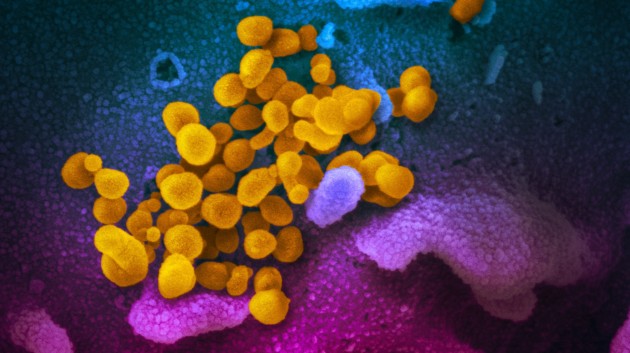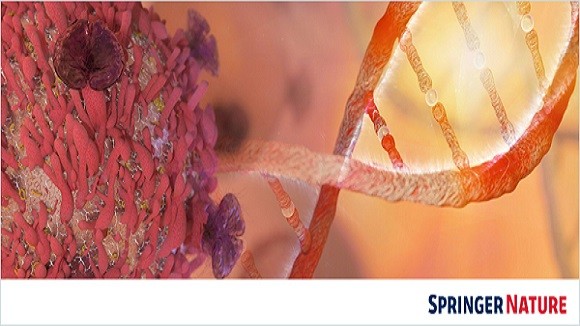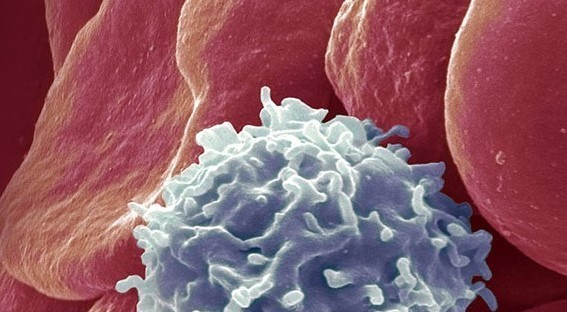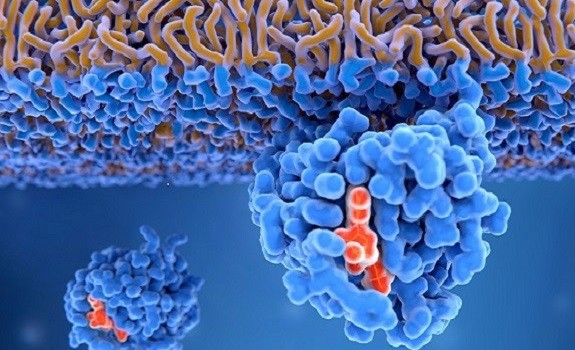Collection |
Collections
Filters
-
Collection Type
-
-
Collection |
 Mechanisms of resistance to cancer therapy
Mechanisms of resistance to cancer therapy
Metastatic cancer is ultimately resistant to virtually all systemic therapies and continues to kill more than 10 million people per year around the world. This suggests a common mechanism for cancer resistance that evolves in millions of people each year, regardless of the instigating carcinogens, suite of mutations present in the tumor, or the tissue of origin. This therapeutic resistance has classically been attributed to genetic tumor cell heterogeneity that develops by stochastic chance, fueled by aneuploidy and genetic instability. In this classic view, resistance to each different therapy requires that the appropriate mutations that confer the different versions of resistance are acquired by at least one cell. Newer models have found potential evidence for the gradual, multifactorial adaptation to the inhibitors through acquisition of multiple cooperating genetic and epigenetic adaptive changes of multiple partially resistant clones as well as the presence of cancer stem cells in which a rare therapy-resistant population of cancer stem cells give rise to a recurrent, resistant population. The below collection of articles published in the journals Oncogene, Leukemia, Blood Cancer Journal, Oncogenesis, Cancer Gene Therapy and Clinical & Experimental Metastasis explore how treatment resistance arises in cancer. The editors welcome future submissions on this topic to expand this collection further.
-
Collection |
 Caring for those with haematological disorders during the Covid-19 pandemic
Caring for those with haematological disorders during the Covid-19 pandemic
During this extraordinary time Leukemia is committed to providing research which will help our readers care for people with haematological disorders at risk of SARS-CoV2-infection and COVID-19. We encourage you to submit relevant research or correspondence, which whilst keeping our high standards of quality and accuracy, will be expedited through peer review and rapidly published online. Below is a selection of article already published – more to follow soon. All research featured in this collection will be free to access until the end of the pandemic.
Image: NIAID-RML -
Collection |
 Management of Chronic Myelogenous Leukemia (CML)
Management of Chronic Myelogenous Leukemia (CML)
Twenty years ago tyrosine kinase-inhibitors (TKIs) of BCR-ABL1 inhibitors were introduced into the therapy of chronic myelogenous leukemia (CML) turning it from a uniformly fatal disease to one where cure, or at least operational cure, is a reality for many people. However, despite this extraordinary achievement important questions remain. More effective TKI need to be balanced with risk of adverse events. Achieving a high quality-of-life remains a challenge during long-term treatment. Leukemia stem cells persist even in persons with undetectable BCR-ABL1 mRNA transcripts using highly sensitive quantitative reverse transcript polymerase chain reaction (qRT-PCR) assays. Optimal duration of TKI-therapy is controversial and accurate prediction of the chances of long-term treatment free remission (TFR) remains a matter of debate. New, more specific drugs and drug combination should help accelerate elimination of residual leukemia stem cells and reduce the risk for adverse events. International recommendations have helped analyze new data and optimize CML management. With this collection we present key original research, reviews, perspectives and editorials recently published in Leukemia. We hope it will prove useful to persons treating CML, leukemia experts and scientists and to people interested in cancer biology and targeted therapies.
-
Collection |
 SN Oncology Portfolio
SN Oncology Portfolio
-
Collection |
 Readers Choice: The best of Leukemia 2020
Readers Choice: The best of Leukemia 2020
See what readers worldwide have been citing and sharing. In this Web Focus we highlight a selection of articles from 2020, which top the list of the journal’s most cited, downloaded and most shared (including press coverage, blogs, Twitter, Facebook and Weibo). They showcase the breadth of scope and coverage that the journal consistently delivers to its readers.
-
Collection |
 Gone too soon
Gone too soon
A collection of obituaries for key names in the field of hematology who have sadly passed, co-authored by Leukemia Editor-in-Chief, Robert Peter Gale.
-
Collection |
 Epigenetics in Cancer
Epigenetics in Cancer
The last few years has seen growing interest in the function of epigenetics in cancer initiation and progression. A growing volume of work now underpins our understanding of the role of these non-genetic modifications in the molecular biology of disease initiation and metastatic spread, and how modulating the cell’s epigenetics may be used as a therapeutic strategy. This collection of articles picked by the Editors from Leukemia, Oncogene, the British Journal of Cancer and Blood Cancer Journal, provides you with a snapshot of current epigenetic research in both haematological and solid cancers.
Image: Sergey Nivens / stock.adobe.com -
Focus |
 Readers' Choice: The Best of Leukemia 2019
Readers' Choice: The Best of Leukemia 2019
See what scientists world-wide have been citing and sharing. In this Web Focus we highlight a selection of articles from 2019, which top the list of the journal’s most cited and most shared (including press coverage, blogs, Twitter, Facebook and Weibo). They showcase the breadth of scope and coverage that the journal consistently delivers to its readers.
-
Collection |
 The best in Hematology
The best in Hematology
To mark the 2019 American Society for Hematology meeting, we are pleased to present some most cited, shared and viewed articles from our academic journals on nature.com
-
Focus |
 Regional Focus - Asia
Regional Focus - Asia
Growth in research coming from Asia, specifically China, over recent years has been pronounced. China has now surpassed the US in terms of global publications output and is challenging the US and Europe in terms of R&D investment. Not only has the volume of research increased but the quality of research has also improved with the volume of citations increasing and a greater percentage of top cited authors now coming from this region. This collection showcases a selection of top cited articles published in Leukemia from authors hailing from this region.
-
Focus |
 Readers' Choice: The best of Leukemia 2018
Readers' Choice: The best of Leukemia 2018
See what scientists world-wide have been citing and sharing. In this Web Focus we highlight a selection of articles from 2018 which top the list of the journal’s most cited and most shared (including press coverage, blogs, Twitter, Facebook and Weibo). They showcase the breadth of scope and coverage that the journal consistently delivers to its readers.

 KRAS-mutant cancers
KRAS-mutant cancers